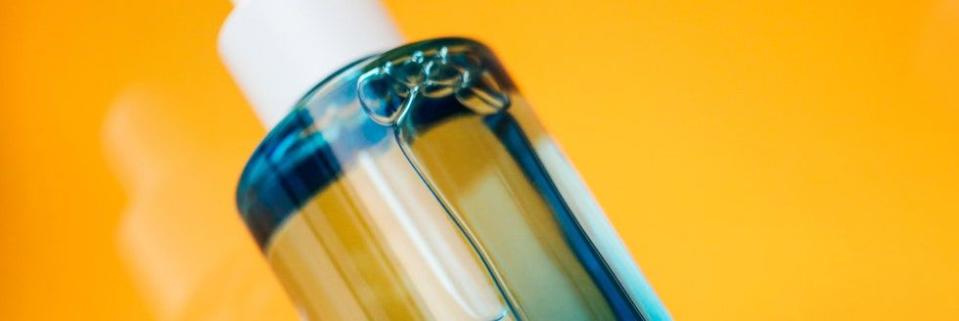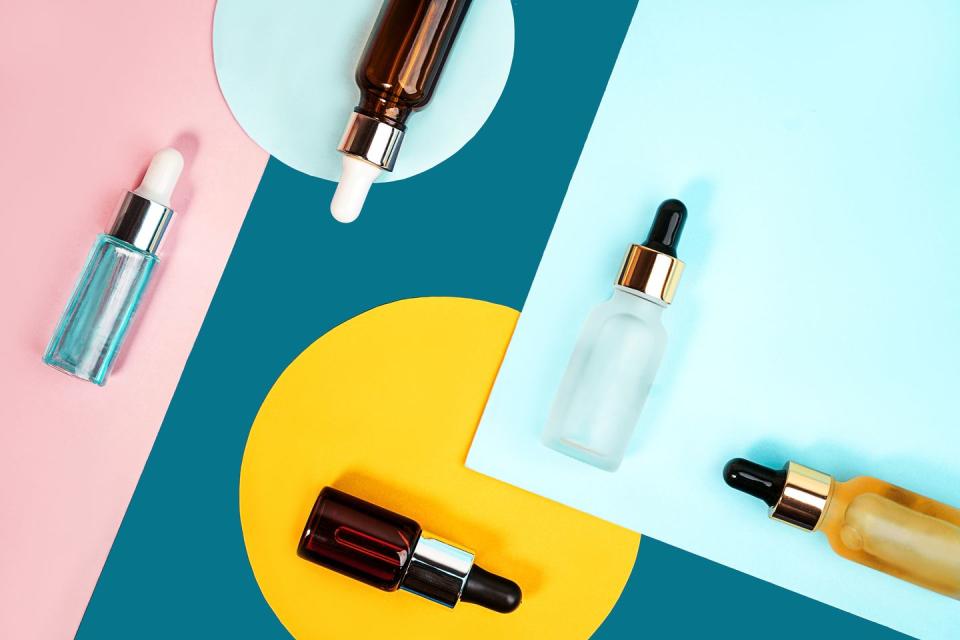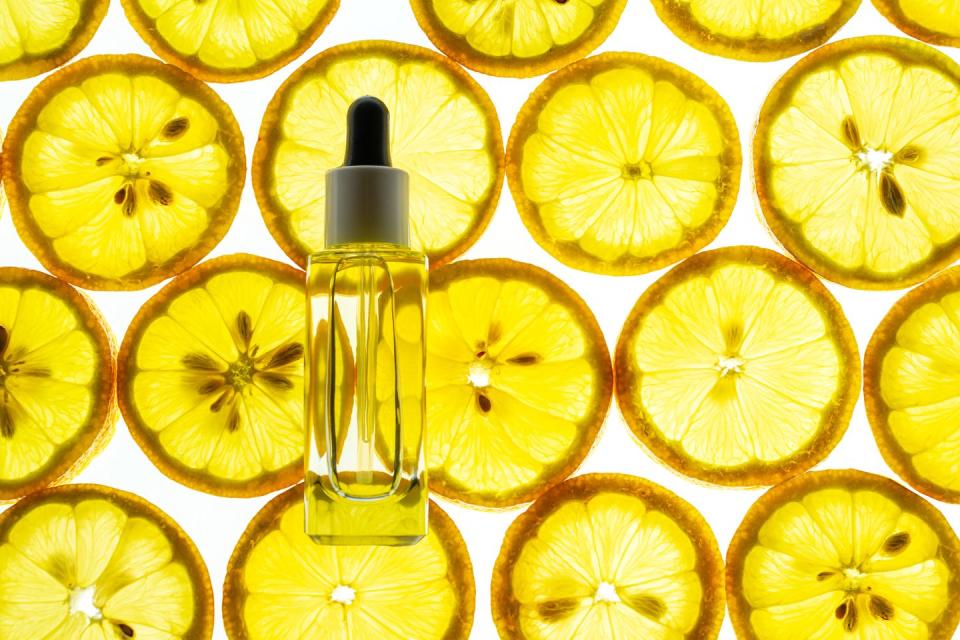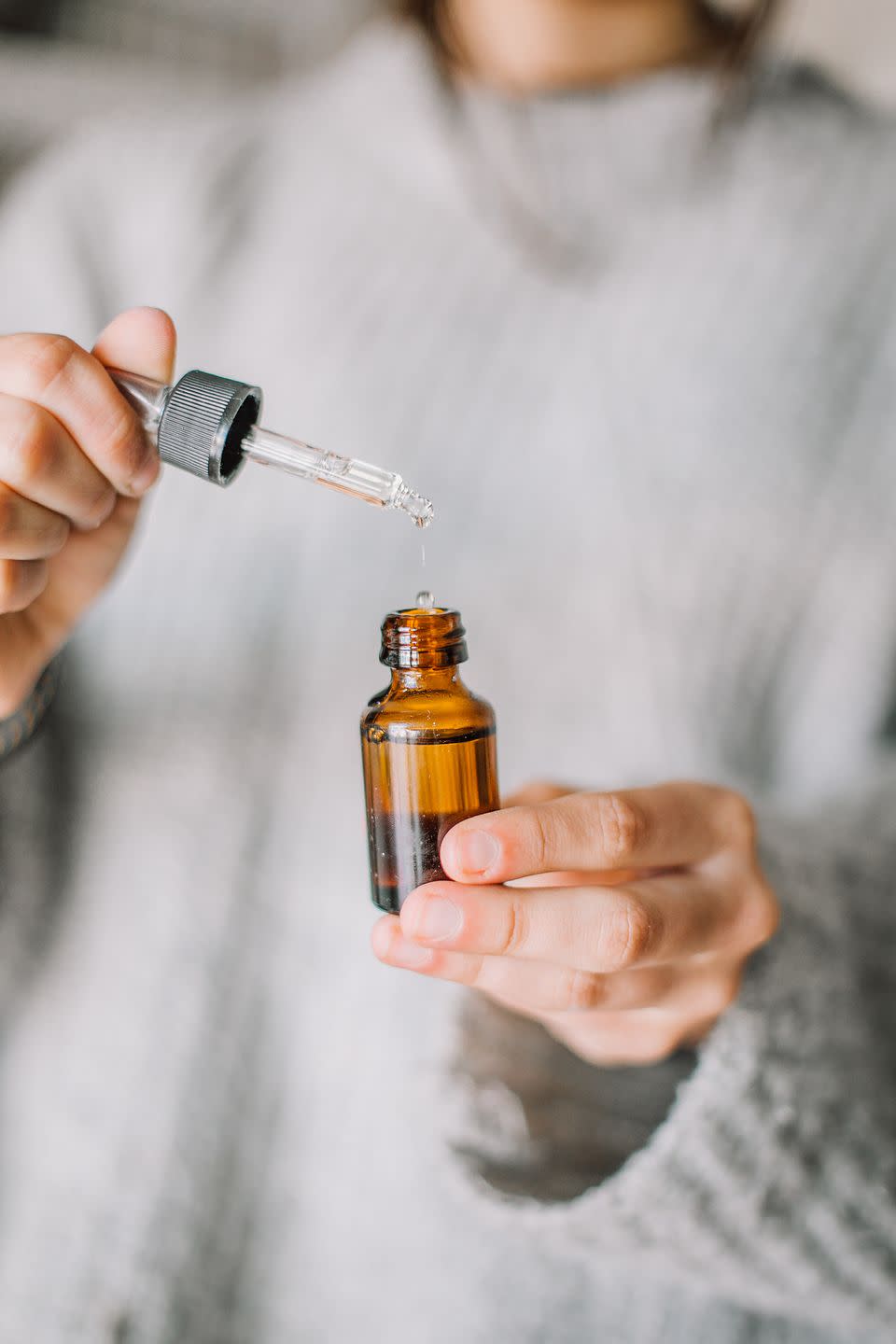10 health benefits of essential oils, backed by research

If you’ve ever dabbled in alternative therapies, you may already be familiar with essential oils. In fact, they form the basis of certain natural practices, most notably aromatherapy. But what are essential oils? And do they offer scientifically proven health benefits?
We spoke to Dr Tim Bond, natural health expert at Puressentiel, about the health benefits of essential oils, how to use them and potential side effects:
What are essential oils?
Essential oils are liquid extracts that contain compounds from certain plants, which may offer health benefits. These oils are highly aromatic – they have a much stronger smell that the plants they originate from, due to the fact they contain a much higher concentration of the active ingredients.
The extraction of essential oils from plants can occur in several ways, the two most common being distillation and cold pressing:
Distillation: the distillation process involves passing water or steam through the plants, which draws the compounds (essence) out of the plant material.
Cold pressing: this is a mechanical process, by which the plant material is pressed or squeezed in order to release the essence.
10 health benefits of essential oils
The use of essential oils is widespread. In fact, they may form part of your routine without you even thinking about it. If you’ve ever applied a vapour rub to a poorly child (or yourself), added a few drops of chamomile oil into a bath for a more relaxing experience, or spritzed your pillow with lavender to help you drift off to sleep at night, you’re harnessing the natural power of essential oils. But do the actually do anything, or are they merely a heavily scented placebo?
Actually, studies suggest that the compounds within the oils may offer health benefits, although often, more research is needed. Here’s what the science has to say:
1. Colds and congestion
Eucalyptus oil is often one of the active ingredients in vapour rubs, which help to ease cold symptoms, including congestion. It’s also common practice to add a few drops of eucalyptus oil to boiling water, so the steam can be inhaled. But is it effective? Apparently so – a 2010 study published in the journal, Paediatrics, concluded that parents rated vapour rub most favourably for symptomatic relief of their child’s upper respiratory tract infection, compared with the control treatments. It’s thought that this is the case because the cineole (a compound found in eucalyptus) acts as a gentle expectorant, and also reduces the muscle spasms involved in the narrowing of airways.
2. Sinus infection
Eucalyptus is once again the star of the show here, with a small 2009 study showing that cineole capsules helped to relieve symptoms of sinusitis. But peppermint oil also shows some promise. While anecdotal evidence shows the inhalation of peppermint oil provides a cooling effect, a laboratory study found peppermint oil may fight the bacteria that leads to sinus congestion. Other studies suggest that tea tree oil, oregano oil, lavender oil and clary sage may also offer benefits.
3. Stress and anxiety
Several studies have found that the smells of certain essential oils, including sweet orange, may have a place in treating anxiety, alongside traditional therapies. And a 2015 clinical trial, which studied the effectiveness of an SOS stress roll-on containing 12 essential oils, concluded that a large majority of the participants had reduced stress after using the roll-on three times daily for a month.
4. Depression
It’s important to note that essential oils are not a cure for depression, but anecdotal evidence and some animal studies point to the fact that they may help to ease some symptoms of depression, such as relieving anxiety, and they may also help to boost relaxation. In a 2014 study on mice, wild ginger oil was shown to effectively inhibit depression-like behavioural responses. And a 2013 study found that patients awaiting surgery were less anxious after inhaling bergamot oil than the control group.
5. Muscle soreness
If you’ve ever suffered from delayed onset muscle soreness (DOMS) after exercise, or get sore muscles after being hunched over a computer each day, you might want to consider turning to essential oils. A 2015 systematic review of essential oils used in aromatherapy suggests tea tree oil may relieve muscle inflammation.
6. Skin problems
The topical application of essential oils has been shown in research to effectively treat a variety of skin complaints, according to Dr Bond. ‘Many essential oils, particularly when diluted [in a carrier oil], are safe and efficacious to use directly on the skin,’ he says. ‘For example, essential oil of Helichrysum italicum reduces erythema and protects against sun damage when applied to the skin. And rose geranium essential oil has anti-inflammatory, antibacterial and antifungal activity, and has shown to be useful for skin problems, such as oily skin, eczema and dermatitis.’
7. Inflammation reduction
While there have not been many human studies to show whether essential oils are effective in reducing inflammation, some laboratory and animal studies have shown that certain oils, including oregano and thyme, rosemary and caraway may have anti-inflammatory benefits.
8. Wound healing
Certain essential oils, such as lavender, have been shown in studies to help with wound healing, according to Dr Bond. ‘Lavender essential oil has proven anti-inflammatory activity with wound-healing properties through increased production of collagen and a growth factor needed for skin regeneration,’ he says.
9. Headaches
Although larger-scale research is needed, several studies have demonstrated the efficacy of essential oils in treating headaches. In one study of 41 patients, a 10 per cent peppermint oil in ethanol solution significantly reduced headache intensity, compared with a placebo, with researchers concluding that topically applied peppermint oil to the temples and forehead is a well-tolerated and cost-effective alternative to usual therapies.
And in a 2012 study of 47 patients, researchers found that the inhalation of lavender oil may be an effective and safe treatment at the onset of migraine headaches.
10. Sleep
Anecdotally, lavender is well regarded as being the oil of choice if you want to drift easily off into the land of nod. And research backs this up: a systematic review of 15 quantitative studies, including 11 clinical trials, concluded that essential oils (the most popular being lavender) could be a good consideration for those with mild sleep disturbances. However, it stated that further research involving larger samples and stronger methods were needed to build on these initial findings.

The most popular essential oils
There are more than 90 essential oils in existence, each with its own purported health benefits. Some of the most popular ones include:
Bergamot: claimed to help remove body odour, boost mood, aid wound healing and promote better digestion.
Chamomile: used to aid relaxation, as well as lift mood and soothe inflammation.
Clary sage: purported to ease mild depression and boost mood, as well as increase libido and regulate menstruation.
Eucalyptus: good for easing cold and congestion symptoms, alongside easing sore muscles and helping to promote good dental hygiene.
Lavender: most commonly used to promote better sleep and aid relaxation.
Lemon: claimed to have antiseptic and antibacterial properties, as well as boosting mood and easing headaches.
Orange: traditionally used in aromatherapy to soothe inflammation, boost mood and enhance libido.
Peppermint: commonly used to aid digestion and relieve headaches.
Rose: traditionally used to ease depression and lift mood.
Sandalwood: purported to help improve memory and focus, as well as easing cough and cold symptoms and easing anxiety.
Tea tree: commonly turned to for its antimicrobial properties, Tea tree is said to aid healing, fight infection and boost immunity.
Ylang-ylang: said to be useful in the treatment of various skin conditions, as well as anxiety and headaches.
How to use essential oils
If you’re keen to try essential oils, it’s important to use them correctly in order to maximise the benefits, as well as minimise any associated risks. The most common ways of using essential oils are:
✔️ Inhalation
The safest and easiest ways of inhaling essential oils are to add to a diffuser; apply a few drops to a tissue or cotton wool ball; or add a few drops to a bowl of hot water and inhale the steam.
✔️ Topical application
When applying essential oils directly, it’s important to add them to a carrier oil first, then massage into the skin. Good carrier oils include coconut, olive and avocado oil. Add a few drops to a spoonful of the carrier oil, blend, then apply.
✔️ Added to a bath
Adding a couple of drops of essential oil to your bathwater will result in both steam inhalation and skin absorption. It’s therefore important never to exceed the recommended amount.
The most important takeaway message, though, is to never ingest essential oils. They are not designed to be swallowed or made into teas, as results can be dangerous. Remember, just because a compound is natural does not mean that it is always safe, and the incorrect use of essential oils can result in toxicity.

Essential oils risks and side effects
As we’ve mentioned, the biggest risk associated with essential oils is toxicity, which can be fatal. This risk is even greater in children. ‘Essential oils are generally not recommended for young children,’ confirms Dr Bond.
Of course, even if you use the oil properly, there can be unwanted side effects. ‘Irritation, contact reactions and allergic reactions can occur with anything applied to the skin,’ reminds Dr Bond. ‘This is often an individual issue and it is therefore important to test any skin product new to you on a small patch of skin before using as intended.’
And if you have an existing medical condition, always be wary when adding something new into your routine – it’s best to proceed with caution or even consult your GP before commencing. ‘People with asthma should use essential oils with caution, as breathing in the fumes could possibly provoke an asthmatic reaction,’ says Dr Bond. ‘Essential oils should not be swallowed, unless you are advised to take them internally by a practitioner. And anyone with a known allergic reaction to a specific essential oil should not use it again.’

Essential oils and pregnancy
Not enough research has been done into the use of essential oils during pregnancy to guarantee the health and safety of your baby, and so the general advice is to avoid using them, even once you have given birth if you are breastfeeding.
‘Essential oils are best not use in pregnancy or while breastfeeding, as they can be absorbed by the skin and pass through the placental barrier in pregnancy, or into the breast milk,’ says Dr Bond.
That said, there is now some evidence to suggest that certain essential oils can be useful for pain relief and easing anxiety during labour, with one study showing that lavender aromatherapy via inhalation helped with pain relief.
Many essential oils are thought to pose a toxicity risk during pregnancy, though, so it is best to avoid them where possible, and never use them during the first trimester.
Last updated: 01-05-2021
You Might Also Like

